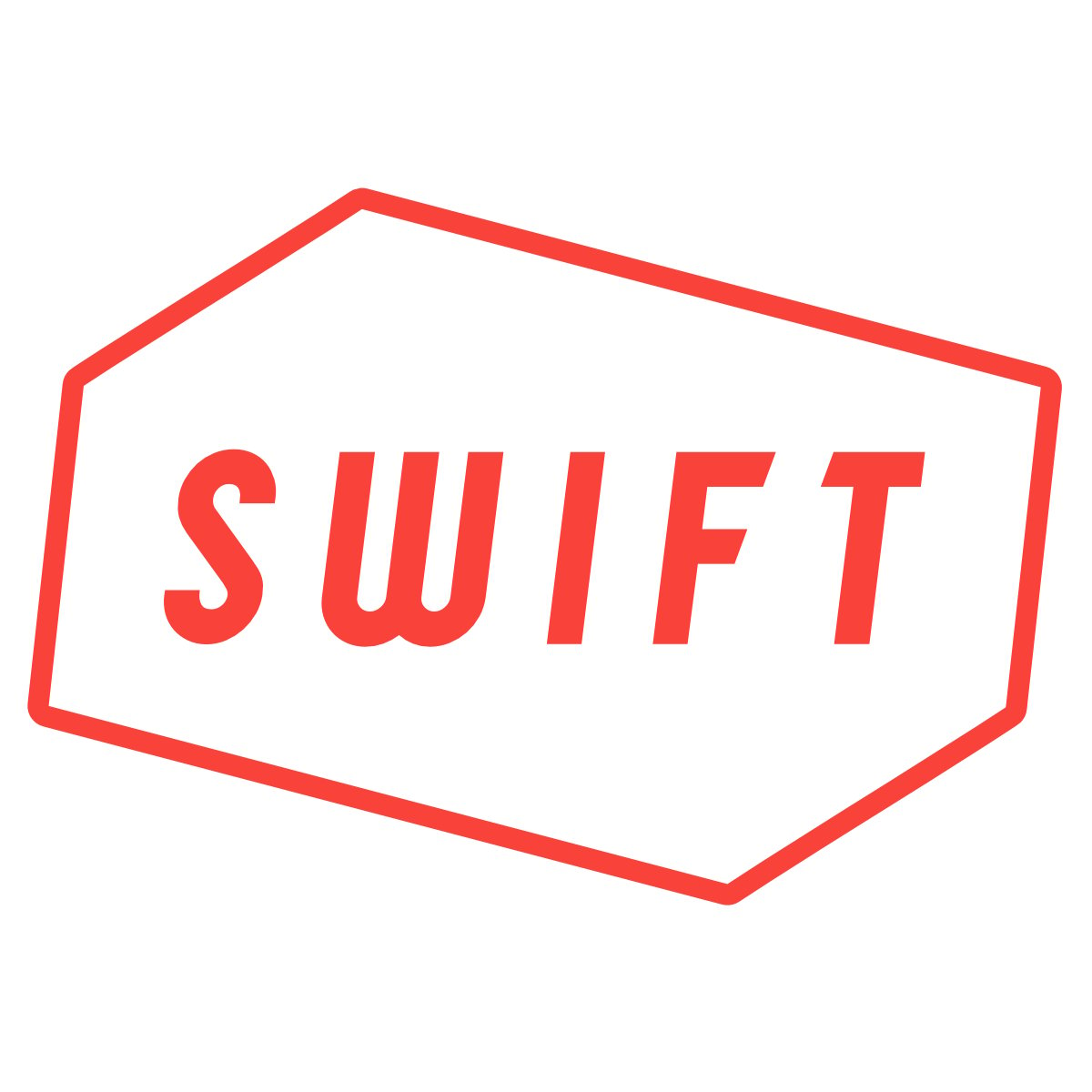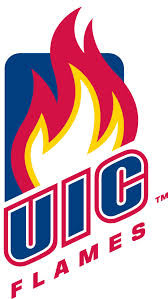CLASS OF 2025
RHP
1B
Keegan
Luxem
Hersey (HS) • IL
6' 5" • 215LBS
R/R • 18yr 2mo
Travel Team: Stoppers Baseball Club
6' 5" • 215LBS
R/R • 18yr 2mo
Travel Team: Stoppers Baseball Club
Rankings
2025 National
Rankings available to Premium Subscriber
2025 State
Rankings available to Premium Subscriber
Commitment
Best Of Stats
Fastball
87.2
Velocity (max)
8/08/23
84 - 87
Velo Range
6/29/23
2262
Spin Rate (avg)
10/16/22
Changeup
79.4 - 80.3
Velo Range
8/08/23
1563
Spin Rate (avg)
10/16/22
Curveball
72 - 75
Velo Range
6/29/23
2330
Spin Rate (avg)
8/08/23
Slider
76 - 78
Velo Range
8/08/23
2099
Spin Rate (avg)
8/08/23
94.8
Exit Velocity (max)
10/16/22
84
Exit Velocity (avg)
10/16/22
326
Distance (max)
10/16/22
58
Sweet Spot %
10/17/21
23
Hand Speed (max)
10/16/22
70.2
Bat Speed (max)
10/16/22
12.7
Rot. Acc (max)
10/16/22
42
Hard Hit %
10/16/22
7.65
60
7/26/23
4.19
30-yd
7/26/23
1.84
10-yd
7/26/23
17.7
Run speed (max)
7/26/23
85
INF Velo
10/16/22
-
OF Velo
-
C Velo
-
Pop Time
Positional Tools
2022
2021
60 Yard Dash
The athlete's fastest 60-yard dash time in the given event year. Measured in seconds (s)
7.68
Infield Velocity
The athlete's maximum throwing velocity from an infield position in the given event year. Measured in miles per hour (MPH).
85.0
Power / Speed Score
A simple calculation that divides the athlete’s Exit Velocity Max by the athlete’s 60 Yard Dash time for the given event year. For example, 98 MPH / 7.00s = 14.00.
12.3
60 Yard Dash
The athlete's fastest 60-yard dash time in the given event year. Measured in seconds (s)
7.77
Infield Velocity
The athlete's maximum throwing velocity from an infield position in the given event year. Measured in miles per hour (MPH).
78.0
Power / Speed Score
A simple calculation that divides the athlete’s Exit Velocity Max by the athlete’s 60 Yard Dash time for the given event year. For example, 98 MPH / 7.00s = 14.00.
11.5
Hitting

2022
2021
Exit Velocity Max
The highest exit velocity of any batted ball in the given event year. Measured in miles per hour (MPH).
94.8
Exit Velocity Avg
Average exit velocity of all batted balls in the given event year. Measured in miles per hour (MPH).
84.0
Distance Max
The highest flight distance of any batted ball in the given event year. Measured in feet (ft).
326
Distance Avg
Average flight distance of all batted balls in the given event year. Measured in feet (ft).
217
Launch Angle Avg
Average launch angle of all batted balls in the given event year. Measured in degrees.
23.0
Hard Hit %
Percentage of batted balls with exit velocities over 95 MPH in the given event year.
Sweet Spot %
Percentage of batted balls in the given event year with a launch angle between 8° and 32°.
Line Drive %
Percentage of batted balls with launch angles between 10 and 25 degrees in the given event year.
Fly Ball %
Percentage of batted balls with launch angles between 25 and 50 degrees in the given event year.
Ground Ball %
Percentage of batted balls with launch angles below 10 degrees in the given event year.
Exit Velocity Max
The highest exit velocity of any batted ball in the given event year. Measured in miles per hour (MPH).
89.7
Exit Velocity Avg
Average exit velocity of all batted balls in the given event year. Measured in miles per hour (MPH).
76.7
Distance Max
The highest flight distance of any batted ball in the given event year. Measured in feet (ft).
309
Distance Avg
Average flight distance of all batted balls in the given event year. Measured in feet (ft).
219
Launch Angle Avg
Average launch angle of all batted balls in the given event year. Measured in degrees.
28.2
Hard Hit %
Percentage of batted balls with exit velocities over 95 MPH in the given event year.
Sweet Spot %
Percentage of batted balls in the given event year with a launch angle between 8° and 32°.
Line Drive %
Percentage of batted balls with launch angles between 10 and 25 degrees in the given event year.
Fly Ball %
Percentage of batted balls with launch angles between 25 and 50 degrees in the given event year.
Ground Ball %
Percentage of batted balls with launch angles below 10 degrees in the given event year.
Underclass Showcase
Oct 16, 2022
Trackman - Hitting
94.8
Exit Velocity (max)
84.0
Exit Velocity (avg)
217
Distance (avg)
326
Distance (max)
Hard Hit %
Sweet Spot %
Line Drive %
Fly Ball %
Ground Ball %
Underclass Showcase
Oct 17, 2021
Trackman - Hitting
89.7
Exit Velocity (max)
76.7
Exit Velocity (avg)
219
Distance (avg)
309
Distance (max)
Sweet Spot %
Line Drive %
Fly Ball %
Ground Ball %
Hitting

2022
2021
Hand Speed Max
The highest Peak Hand Speed of any swing in the given event year.
23.0
Hand Speed Avg
The average Peak Hand Speed for all swings in the given event year.
21.8
Bat Speed Max
The highest Bat Speed of any swing in the given event year.
70.2
Bat Speed Avg
The average Bat Speed for all swings in the given event year.
67.5
Rotational Acceleration Max
The highest Rotational Acceleration of any swing in the given event year.
Rotational Acceleration Avg
The average Rotational Acceleration for all swings in the given event year.
On-Plane Efficiency Max
The highest On-Plane Efficiency of any swing in the given event year.
On-Plane Efficiency Avg
The average On-Plane Efficiency for all swings in the given event year.
Hand Speed Max
The highest Peak Hand Speed of any swing in the given event year.
21.4
Hand Speed Avg
The average Peak Hand Speed for all swings in the given event year.
20.6
Bat Speed Max
The highest Bat Speed of any swing in the given event year.
68.8
Bat Speed Avg
The average Bat Speed for all swings in the given event year.
66.3
Rotational Acceleration Max
The highest Rotational Acceleration of any swing in the given event year.
Rotational Acceleration Avg
The average Rotational Acceleration for all swings in the given event year.
On-Plane Efficiency Max
The highest On-Plane Efficiency of any swing in the given event year.
On-Plane Efficiency Avg
The average On-Plane Efficiency for all swings in the given event year.
Underclass Showcase
Oct 16, 2022
Blast - Hitting
23.0
Hand Speed (max)
21.8
Hand Speed (avg)
70.2
Bat Speed (max)
67.5
Bat Speed (avg)
Rot. Acc (max)
Rot. Acc (avg)
On Plane Eff (avg)
MaxOnPlaneEfficiency
Underclass Showcase
Oct 17, 2021
Blast - Hitting
21.4
Hand Speed (max)
20.6
Hand Speed (avg)
68.8
Bat Speed (max)
66.3
Bat Speed (avg)
Rot. Acc (max)
Rot. Acc (avg)
On Plane Eff (avg)
MaxOnPlaneEfficiency
Pitching

2023
2022
2021
Fastball
Velocity Max
The maximum observed fastball velocity in the given event year. Measured in miles per hour (MPH).
87.2
Fastball
Velocity Avg
The average velocity for all pitches of this type in the given event year. Measured in miles per hour (MPH).
84.5
Fastball
Spin Rate Avg
The average rate of spin for all pitches of this type in the given event year. Measured in rotations per minute (RPM).
2157
Fastball
Spin Score Avg
The average Bauer Units value of all fastballs in the given event year. Bauer Units are calculated for each pitch by dividing Spin Rate by Velocity.
25.5
Fastball
Total Movement Avg
The average total non-gravity movement for all pitches of this type in the given event year. Measured in inches (in).
Curveball
Velocity Avg
The average velocity for all pitches of this type in the given event year. Measured in miles per hour (MPH).
72.4
Curveball
Spin Rate Avg
The average rate of spin for all pitches of this type in the given event year. Measured in rotations per minute (RPM).
2230
Curveball
Total Movement Avg
The average total non-gravity movement for all pitches of this type in the given event year. Measured in inches (in).
Changeup
Velocity Avg
The average velocity for all pitches of this type in the given event year. Measured in miles per hour (MPH).
79.9
Changeup
Spin Rate Avg
The average rate of spin for all pitches of this type in the given event year. Measured in rotations per minute (RPM).
1288
Changeup
Total Movement Avg
The average total non-gravity movement for all pitches of this type in the given event year. Measured in inches (in).
Slider
Velocity Avg
The average velocity for all pitches of this type in the given event year. Measured in miles per hour (MPH).
76.6
Slider
Spin Rate Avg
The average rate of spin for all pitches of this type in the given event year. Measured in rotations per minute (RPM).
2099
Slider
Total Movement Avg
The average total non-gravity movement for all pitches of this type in the given event year. Measured in inches (in).
Fastball
Velocity Max
The maximum observed fastball velocity in the given event year. Measured in miles per hour (MPH).
84.5
Fastball
Velocity Avg
The average velocity for all pitches of this type in the given event year. Measured in miles per hour (MPH).
83.5
Fastball
Spin Rate Avg
The average rate of spin for all pitches of this type in the given event year. Measured in rotations per minute (RPM).
2262
Fastball
Spin Score Avg
The average Bauer Units value of all fastballs in the given event year. Bauer Units are calculated for each pitch by dividing Spin Rate by Velocity.
27.1
Fastball
Total Movement Avg
The average total non-gravity movement for all pitches of this type in the given event year. Measured in inches (in).
Curveball
Velocity Avg
The average velocity for all pitches of this type in the given event year. Measured in miles per hour (MPH).
66.7
Curveball
Spin Rate Avg
The average rate of spin for all pitches of this type in the given event year. Measured in rotations per minute (RPM).
2232
Curveball
Total Movement Avg
The average total non-gravity movement for all pitches of this type in the given event year. Measured in inches (in).
Changeup
Velocity Avg
The average velocity for all pitches of this type in the given event year. Measured in miles per hour (MPH).
75.8
Changeup
Spin Rate Avg
The average rate of spin for all pitches of this type in the given event year. Measured in rotations per minute (RPM).
1563
Changeup
Total Movement Avg
The average total non-gravity movement for all pitches of this type in the given event year. Measured in inches (in).
Fastball
Velocity Max
The maximum observed fastball velocity in the given event year. Measured in miles per hour (MPH).
78.0
Fastball
Velocity Avg
The average velocity for all pitches of this type in the given event year. Measured in miles per hour (MPH).
77.0
Fastball
Spin Rate Avg
The average rate of spin for all pitches of this type in the given event year. Measured in rotations per minute (RPM).
1941
Fastball
Spin Score Avg
The average Bauer Units value of all fastballs in the given event year. Bauer Units are calculated for each pitch by dividing Spin Rate by Velocity.
25.2
Fastball
Total Movement Avg
The average total non-gravity movement for all pitches of this type in the given event year. Measured in inches (in).
Curveball
Velocity Avg
The average velocity for all pitches of this type in the given event year. Measured in miles per hour (MPH).
62.3
Curveball
Spin Rate Avg
The average rate of spin for all pitches of this type in the given event year. Measured in rotations per minute (RPM).
2155
Curveball
Total Movement Avg
The average total non-gravity movement for all pitches of this type in the given event year. Measured in inches (in).
Changeup
Velocity Avg
The average velocity for all pitches of this type in the given event year. Measured in miles per hour (MPH).
67.4
Changeup
Spin Rate Avg
The average rate of spin for all pitches of this type in the given event year. Measured in rotations per minute (RPM).
1356
Changeup
Total Movement Avg
The average total non-gravity movement for all pitches of this type in the given event year. Measured in inches (in).
Illinois State Games (Invite-Only)
Aug 8, 2023
Trackman - Fastball
87.2
Velocity (max)
84.9 - 86.4
Velo Range
85.0
Eff Velocity (avg)
2,371
Spin Rate (max)
2,261
Spin Rate (avg)
IVB (max)
IVB (avg)
HM (max)
HM (avg)
Extension (avg)
Release Ht (avg)
Spin Score (max)
Zone %
Spin Efficiency % (avg)
Trackman - Curveball
76.0
Velocity (max)
72.4 - 74.7
Velo Range
72.0
Eff Velocity (avg)
2,444
Spin Rate (max)
2,330
Spin Rate (avg)
IVB (max)
IVB (avg)
HM (max)
HM (avg)
Extension (avg)
Release Ht (avg)
Spin Score (max)
Zone %
Spin Efficiency % (avg)
Trackman - Slider
78.1
Velocity (max)
75.6 - 77.6
Velo Range
75.2
Eff Velocity (avg)
2,437
Spin Rate (max)
2,099
Spin Rate (avg)
IVB (max)
IVB (avg)
HM (max)
HM (avg)
Extension (avg)
Release Ht (avg)
Spin Score (max)
Zone %
Spin Efficiency % (avg)
Trackman - ChangeUp
80.3
Velocity (max)
79.4 - 80.3
Velo Range
78.8
Eff Velocity (avg)
1,329
Spin Rate (max)
1,288
Spin Rate (avg)
IVB (max)
IVB (avg)
HM (max)
HM (avg)
Extension (avg)
Release Ht (avg)
Spin Score (max)
Zone %
Spin Efficiency % (avg)
2023 PBR Future Games
Jul 26, 2023
Trackman - Fastball
86.9
Velocity (max)
82.8 - 85.1
Velo Range
83.4
Eff Velocity (avg)
2,338
Spin Rate (max)
2,105
Spin Rate (avg)
IVB (max)
IVB (avg)
HM (max)
HM (avg)
Extension (avg)
Release Ht (avg)
Spin Score (max)
Zone %
Trackman - Curveball
76.5
Velocity (max)
69.3 - 73.6
Velo Range
70.4
Eff Velocity (avg)
2,315
Spin Rate (max)
2,150
Spin Rate (avg)
IVB (max)
IVB (avg)
HM (max)
HM (avg)
Extension (avg)
Release Ht (avg)
Spin Score (max)
Zone %
Underclass Showcase
Oct 16, 2022
Trackman - Fastball
84.5
Velocity (max)
82.7 - 84.3
Velo Range
80.8
Eff Velocity (avg)
2,330
Spin Rate (max)
2,262
Spin Rate (avg)
IVB (max)
IVB (avg)
HM (max)
HM (avg)
Extension (avg)
Release Ht (avg)
Spin Score (max)
Zone %
Trackman - Curveball
67.4
Velocity (max)
66.0 - 67.4
Velo Range
64.1
Eff Velocity (avg)
2,266
Spin Rate (max)
2,232
Spin Rate (avg)
IVB (max)
IVB (avg)
HM (max)
HM (avg)
Extension (avg)
Release Ht (avg)
Spin Score (max)
Zone %
Trackman - ChangeUp
76.3
Velocity (max)
75.4 - 76.2
Velo Range
73.1
Eff Velocity (avg)
1,638
Spin Rate (max)
1,563
Spin Rate (avg)
IVB (max)
IVB (avg)
HM (max)
HM (avg)
Extension (avg)
Release Ht (avg)
Spin Score (max)
Zone %
Underclass Showcase
Oct 17, 2021
Trackman - Fastball
78.0
Velocity (max)
76.0 - 77.9
Velo Range
74.8
Eff Velocity (avg)
2,054
Spin Rate (max)
1,941
Spin Rate (avg)
IVB (max)
IVB (avg)
HM (max)
HM (avg)
Extension (avg)
Release Ht (avg)
Spin Score (max)
Trackman - Curveball
62.7
Velocity (max)
61.9 - 62.6
Velo Range
60.5
Eff Velocity (avg)
2,221
Spin Rate (max)
2,155
Spin Rate (avg)
IVB (max)
IVB (avg)
HM (max)
HM (avg)
Extension (avg)
Release Ht (avg)
Spin Score (max)
Zone %
Trackman - ChangeUp
68.6
Velocity (max)
66.5 - 68.4
Velo Range
65.7
Eff Velocity (avg)
1,393
Spin Rate (max)
1,356
Spin Rate (avg)
IVB (max)
IVB (avg)
HM (max)
HM (avg)
Extension (avg)
Release Ht (avg)
Spin Score (max)
Zone %
Pitch Scores
2023
2022
2021
Fastball
Hop+
A fastball with hop has a flat approach angle and visually jumps through the zone. When thrown up in the zone, it is more likely to generate a higher swing and miss average. Hop+ of 100 is MLB average.
Fastball
Sink+
A fastball with sink has low backspin and drops through the strike zone. When thrown down in the zone, it is more likely to generate a higher ground ball percentage and lower launch angle. Sink+ of 100 is MLB average.
Fastball
Rise+
A fastball with rise has a high percentage of backspin. When thrown up in the zone, it is more likely to generate a higher fly ball percentage. Rise+ of 100 is MLB average
Curveball
Hammer+
A hammer breaking ball drops vertically with velocity through the zone, or 12-to-6 movement. Hammer+ of 100 is MLB average.
Curveball
Sweep+
A sweeping breaking ball moves horizontally with velocity through the zone. Sweep+ of 100 is MLB average.
Slider
Hammer+
A hammer breaking ball drops vertically with velocity through the zone, or 12-to-6 movement. Hammer+ of 100 is MLB average.
Slider
Sweep+
A sweeping breaking ball moves horizontally with velocity through the zone. Sweep+ of 100 is MLB average.
Fastball
Hop+
A fastball with hop has a flat approach angle and visually jumps through the zone. When thrown up in the zone, it is more likely to generate a higher swing and miss average. Hop+ of 100 is MLB average.
Fastball
Sink+
A fastball with sink has low backspin and drops through the strike zone. When thrown down in the zone, it is more likely to generate a higher ground ball percentage and lower launch angle. Sink+ of 100 is MLB average.
Fastball
Rise+
A fastball with rise has a high percentage of backspin. When thrown up in the zone, it is more likely to generate a higher fly ball percentage. Rise+ of 100 is MLB average
Curveball
Hammer+
A hammer breaking ball drops vertically with velocity through the zone, or 12-to-6 movement. Hammer+ of 100 is MLB average.
Curveball
Sweep+
A sweeping breaking ball moves horizontally with velocity through the zone. Sweep+ of 100 is MLB average.
Fastball
Hop+
A fastball with hop has a flat approach angle and visually jumps through the zone. When thrown up in the zone, it is more likely to generate a higher swing and miss average. Hop+ of 100 is MLB average.
Fastball
Sink+
A fastball with sink has low backspin and drops through the strike zone. When thrown down in the zone, it is more likely to generate a higher ground ball percentage and lower launch angle. Sink+ of 100 is MLB average.
Fastball
Rise+
A fastball with rise has a high percentage of backspin. When thrown up in the zone, it is more likely to generate a higher fly ball percentage. Rise+ of 100 is MLB average
Curveball
Hammer+
A hammer breaking ball drops vertically with velocity through the zone, or 12-to-6 movement. Hammer+ of 100 is MLB average.
Curveball
Sweep+
A sweeping breaking ball moves horizontally with velocity through the zone. Sweep+ of 100 is MLB average.
Illinois State Games (Invite-Only)
Aug 8, 2023
Pitch Scores - Fastball
Hop+
Rise+
Sink+
Pitch Scores - Curveball
Hammer+
Sweep+
Pitch Scores - Slider
Hammer+
Sweep+
Pitching Velos
2023
2022
2021
Fastball
Velocity Max
The maximum observed fastball velocity in the given event year. Measured in miles per hour (MPH).
87.0
Fastball
Velocity Avg
The average velocity for all pitches of this type in the given event year. Measured in miles per hour (MPH)
85.0
Curveball
Velocity Avg
The average velocity for all pitches of this type in the given event year. Measured in miles per hour (MPH)
72.5
Changeup
Velocity Avg
The average velocity for all pitches of this type in the given event year. Measured in miles per hour (MPH)
79.0
Slider
Velocity Avg
The average velocity for all pitches of this type in the given event year. Measured in miles per hour (MPH)
76.8
Fastball
Velocity Max
The maximum observed fastball velocity in the given event year. Measured in miles per hour (MPH).
85.0
Fastball
Velocity Avg
The average velocity for all pitches of this type in the given event year. Measured in miles per hour (MPH)
83.5
Curveball
Velocity Avg
The average velocity for all pitches of this type in the given event year. Measured in miles per hour (MPH)
66.5
Changeup
Velocity Avg
The average velocity for all pitches of this type in the given event year. Measured in miles per hour (MPH)
75.5
Fastball
Velocity Max
The maximum observed fastball velocity in the given event year. Measured in miles per hour (MPH).
78.0
Fastball
Velocity Avg
The average velocity for all pitches of this type in the given event year. Measured in miles per hour (MPH)
77.0
Curveball
Velocity Avg
The average velocity for all pitches of this type in the given event year. Measured in miles per hour (MPH)
62.5
Changeup
Velocity Avg
The average velocity for all pitches of this type in the given event year. Measured in miles per hour (MPH)
67.5
Game Performance

2023
10 Yard Dash
The athlete's fastest 0-10-yard split time in the given event year. Measured in seconds.
1.83
30 Yard Dash
The athlete's fastest 0-30-yard split time in the given event year. Measured in seconds.
4.19
60 Yard Dash
The athlete's fastest 0-60-yard time in the given event year. Measured in seconds.
7.66
Top Speed (MPH)
The athlete's fastest split time converted to miles per hour.
Underclass Showcase
Oct 16, 2022
Swift
1.81
10-yd
4.23
30-yd
7.68
60-yd
17.8
Run speed (max)
1.88
RSi (max)
1.88
RSi (avg)
1,676
Jump Power (max)
24.1
Jump Height (max)
24.0
Jump Height (avg)
Visual Edge

2022
2021
Edge Score
The highest Edge Score within the given year. Edge Score is a comprehensive score that takes the core-six visual skills into account, providing an assessment of an athlete’s overall visual ability.
77.2
Edge Score
The highest Edge Score within the given year. Edge Score is a comprehensive score that takes the core-six visual skills into account, providing an assessment of an athlete’s overall visual ability.
62.41
Pitch Ai

2022
Arm Speed
The maximum speed, in the direction of home plate, that the wrist is traveling. Measured in meters per second (m/s)
Arm Slot
Angle of the forearm relative to the ground between maximum external rotation (MER) and ball release (BR). Which can be a powerful player comparison metric, delivered in degrees.
Knee Extension Velo
The angular velocity of the front knee straightening after foot plant, which provides indicators of velocity potential. Measured in degrees per second.
Deception
The amount of time that the ball is visible to the hitter, after the instant of front foot strike. Measures in milliseconds.
Hip-Shoulder Separation
The difference in angle of between the hips and shoulders, occurring close to the foot plant. Measured in degrees.
Underclass Showcase
Oct 16, 2022
ProPlayAI - Foot Plant
Elbow Flexion (avg)
Shoulder Abduction (avg)
Hip Shoulder Seperation (avg)
ProPlayAI - MER
External Rotation (avg)
Stride Length (avg)
Horizontal Abduction (avg)
ProPlayAI - Release
Arm Speed (max)
Arm Speed (avg)
Knee Extension Velocity (max)
Knee Extension Velocity (avg)
Knee Flexion (avg)
Arm Slot (avg)
Lateral Trunk Tilt (avg)
Arm Path (avg)
Deception (avg)
Torque (avg)
Efficiency (avg)
Sequencing (avg)
Notes
News
- Preseason Power 25 Countdown: No. 9 Hersey - Mar 9, 2024
- Illinois State Games: 2025 Pitcher Analysis - Oct 26, 2023
- Illinois State Games, Takeaways: 2025s - Aug 21, 2023
- Team Illinois: Takeaways - Aug 1, 2023
- 2023 Future Games Preview: Team Illinois - Jul 24, 2023
- Illinois Class of 2025 Rankings: Update - Dec 7, 2022
- Underclass Showcase: Data Dive - Oct 24, 2022
- Underclass Showcase: Statistical Analysis - Oct 22, 2022
- Underclass Showcase: Quick Hits - Oct 18, 2022
- Underclass Showcase: Infield Analysis - Mar 29, 2022
- Underclass Showcase: Pitcher Analysis - Mar 29, 2022
- Underclass Showcase: Quick Hits - Oct 19, 2021
Comments
Draft Reports
Contact
Premium Content Area
To unlock contact information, you need to purchase a ScoutPLUS subscription.
Purchase Subscription OR
Login







 Sign in to view rankings
Sign in to view rankings 
Fresh off an outing for Team Illinois at the PBR Future Games, RHP Keegan Luxem (Hersey, 2025) continued to display a high upside on the bump. Luxem stands at an imposing 6-foot-5, 215-pound frame with more strength to come. The right-hander features an effortless delivery that is well-balanced and sequenced. In gameplay, he came out firing with a heavy dose of power fastballs that worked in the mid-80s, T87.2 with significant spin (2371 RPM). Luxem used his heater to get swings and misses up in the zone, partly due to his event best 24.5” of max IVB. He often went to a slider that played in the upper-70s at times with short break and depth to miss barrels. Also flashed feel for a low-80s changeup and a high spin curveball (2444 RPM).
Positional Profile: RHP/1B
Body: 6-5, 215-pounds. Physical, strong.
Delivery: Short, simple, drop and drive delivery. Medium leg lift, lands in-line with home.
Arm Action: RH. Compact, quick arm action. High 3/4 slot.
FB: T87, 85-86 mph. Life out of the hand with ride through the zone. T2371, 2261 average rpm.
CB: 72-75 mph. High spin, late 11/5 action. T2444, 2330 average rpm.
SL: 76-78 mph. Short break, thrown for strikes. T2437, 2099 average rpm.
CH: 79-80 mph. Kills spin, plays with sink and some arm-side fade. T1329, 1288 average rpm.
RHP Keegan Luxem (Hersey, 2025) certainly stands out on the field, bringing a hulking 6-foot-5, 215-pound frame to the mound. Luxem’s fastball touched 87 mph, pitching in the low-to-mid-80s with a low-70s curveball to pair that spun at upwards of 2500 RPM.
PBR Future Games: RHP Keegan Luxem (Hersey, 2025) certainly stands out on the field, bringing a hulking 6-foot-5, 215-pound frame to the mound. Luxem’s fastball touched 87 mph, pitching in the low-to-mid-80s with a low-70s curveball to pair that spun at upwards of 2500 RPM.
6-foot-5, 215-pound frame with a strong lower half. Ball comes out of the hand clean upon delivery with a longer stride towards the plate. Fastball sat 82-85 mph, T86 mph with natural cut. Curveball was 68-73 mph with quality vertical depth. Slider was sharp and late-breaking at 74-77 mph.
RHP Keegan Luxem (Hersey, 2025) made a loud statement in his ‘pen on Sunday. Standing at an already physical 6-foot-4, 200-pounds, Luxem catches the eye before he even steps on the mound. His delivery is simple and he showed the ability to control his limbs and repeat before moving into a high ¾ slot. His fastball plays with some angle through the zone and a max IVB of 19.8, sitting 82-84 mph throughout his ‘pen with spin reaching over 2,300 RPM. His curveball has potential, playing with sharp 11/5 action at times while occasionally missing up in the zone, 66-67 mph. His final offering was a changeup at 75-76 mph, playing with tilt when kept down and arm-side fade through the zone. With Luxem’s ability to control his body at his young age, the command over his arsenal should only continue to tick up as he develops in the coming years.
Positional Profile: RHP/1B
Body: 6-4, 200-pounds. Athletic, strong lower-half, long limbs with room for added strength.
Delivery: Stretch only, simple delivery with a medium balance point, tall/fall lower-half, shoulders remain level throughout, stride works in-line.
Arm Action: RH. Medium arm circle into an over-the-top slot.
FB: T84.5, 83-84 mph. Plays with life out of the hand and finish through the zone. T2330, 2262 average rpm.
CB: 66-67 mph. Sharp, downer 11/5 action with late bite, feel for the pitch. T2266, 2232 average rpm.
CH: 75-76 mph. Plays with fading action to the arm-side, maintains near fastball arm-speed. T1638, 1563 average rpm.
Hit: RHH. Tall start, bat wraps, creates separation at load, long stride. Long path, strong levers, advanced bat strength for his age, hard gap-to-gap contact.
Power: 95 max exit velocity, averaged 84 mph. 326’ max distance.
Arm: RH. INF - 85 mph. Short arm circle into a high 3/4 slot.
Defense: Steady hands, active footwork, moves well for size.
Run: 7.68 runner in the 60.
Positional Profile: RHP/1B
Body: 6-3, 190-pounds. Advanced frame, wide-shouldered athletic build with strength throughout.
Delivery: Stretch-only tall and fall delivery, works on-line and lands square.
Arm Action: RH. Long arm action, plays from an over-the-top slot.
FB: T78.0, 76.04-77.87 mph. Straight action, plays up in the zone. T2054, 1941 average rpm.
CB: 61.91-62.63 mph. 11/5 to 12/6 shape, tight spin and depth. T2220, 2155 average rpm.
CH: 66.49-68.37 mph. Creates tilt, occasional run. T1392, 1356 average rpm.
Hit: RHH. Balanced setup, quiet load with a short stride. Long and level path to contact. Levers whip through the zone to generate easy pull-side power.
Power: 89.7 max exit velocity, averaged 76.7 mph. 309’ max distance.
Arm: RH. INF - 78 mph. Short over-the-top slot.
Defense: Sure-handed with a clean transfer.
Run: 7.77 runner in the 60.